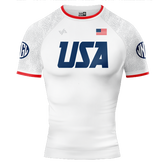Tracing the Lineage: The Evolution of Brazilian Jiu Jitsu and Its Greatest Grapplers
Brazilian Jiu Jitsu (BJJ), renowned for its intricate ground-fighting techniques and devastating submission holds, is more than a martial art—it's a compelling tale of adaptability, innovation, and tenacity. This article embarks on a journey tracing the rich origins of BJJ, leading up to the current era, and introduces the sport's legendary figures, including the key architects of BJJ’s evolution and the most formidable grapplers of our time.
Origin of Brazilian Jiu Jitsu
Brazilian Jiu Jitsu's roots can be traced back to the ancient Japanese martial art of Jiu Jitsu, developed for battlefield combat. Mitsuyo Maeda, a Judo expert, brought it to Brazil and shared his knowledge with Carlos Gracie, who, along with his brothers, established the first Jiu Jitsu academy in Brazil in the 1920s, marking the genesis of BJJ.
Key Grapplers of the Founding Era:
-
Mitsuyo Maeda: Known as "Count Koma," Maeda played an instrumental role in introducing Jiu Jitsu to Brazil, profoundly influencing Carlos Gracie with his teachings.
-
Carlos Gracie: Often hailed as the father of BJJ, Carlos was the first of the Gracie brothers to learn Jiu Jitsu from Maeda and was instrumental in creating the Gracie Academy.
-
Hélio Gracie: Carlos’s younger brother, Hélio, etched his mark on the sport by tailoring the techniques to his frail physique. Hélio emphasized using leverage and technique over strength, which became the bedrock principles of modern BJJ. He crafted an approach to Jiu Jitsu that enabled a smaller, weaker person to defend themselves against a larger, stronger opponent, breaking barriers in martial arts. Hélio's influence extended beyond the mats; he instilled the philosophy of discipline, respect, and self-confidence in his students, shaping the very ethos of BJJ.
The Expansion Era (1970s-1990s)
The expansion era was a significant chapter in BJJ history as the martial art gained recognition on a larger scale. This period marked the rise of BJJ in both Brazil and the United States, with the founding of the International Brazilian Jiu Jitsu Federation (IBJJF) and the birth of the Ultimate Fighting Championship (UFC).
Key Grapplers of the Expansion Era:
-
Rorion Gracie: Rorion introduced BJJ to the United States, co-founded the UFC, and showcased BJJ’s effectiveness to a global audience.
-
Rickson Gracie: Known for his unmatched record and technique, Rickson Gracie is widely regarded as one of the best BJJ practitioners of his time.
-
Royce Gracie: Royce’s victories in the early UFC events, despite being significantly smaller than most competitors, dramatically demonstrated the effectiveness of BJJ.
The Modern Era (2000-Present)
The modern era has seen BJJ grow into a worldwide phenomenon, with practitioners and competitions across the globe. The emergence of the ADCC (Abu Dhabi Combat Club) Submission Wrestling World Championship, one of the most prestigious no-gi grappling tournaments in the world, and the popularity of No-Gi grappling have added new dimensions to the sport, making it an essential part of Mixed Martial Arts (MMA).
Key Grapplers of the Modern Era:
-
Marcelo Garcia: Known for his humble demeanor and extraordinary skills, Garcia is a five-time World Champion and four-time ADCC Champion.
-
Roger Gracie: With a simple yet highly effective style, Roger Gracie is considered one of the greatest BJJ practitioners, having won numerous world titles.
-
Marcus "Buchecha" Almeida: Buchecha is one of the most decorated BJJ athletes, admired for his aggressive style and dynamic moves.
-
Gordon Ryan: Known as the "King," Gordon Ryan is a modern BJJ phenomenon. Ryan's impressive performance in no-gi grappling, including his multiple ADCC World Championship victories, has revolutionized the sport.
The evolution of Brazilian Jiu Jitsu is an enthralling story of adaptation, innovation, and global growth. As we delve into the rich history and appreciate the greatest grapplers from each era, we gain a deeper understanding and respect for this transformative martial art.











Leave a comment
Please note, comments need to be approved before they are published.